Angie Dickinson reflects on her best roles, from Rio Bravo to Ocean's 11 to Dressed to Kill

There aren't many people who merit the term "living legend," but Angie Dickinson is one of them. On screen, she went toe-to-toe with the likes of John Wayne, Marlon Brando, and Lee Marvin. She was slapped in the face by the future President of the United States, Ronald Reagan, and brutally murdered in an elevator as depicted by Brian De Palma.
If that wasn't enough, she's rumored to have conducted love affairs with Frank Sinatra and President Kennedy. And if nothing else, she and Sinatra counted each other as lifelong friends.
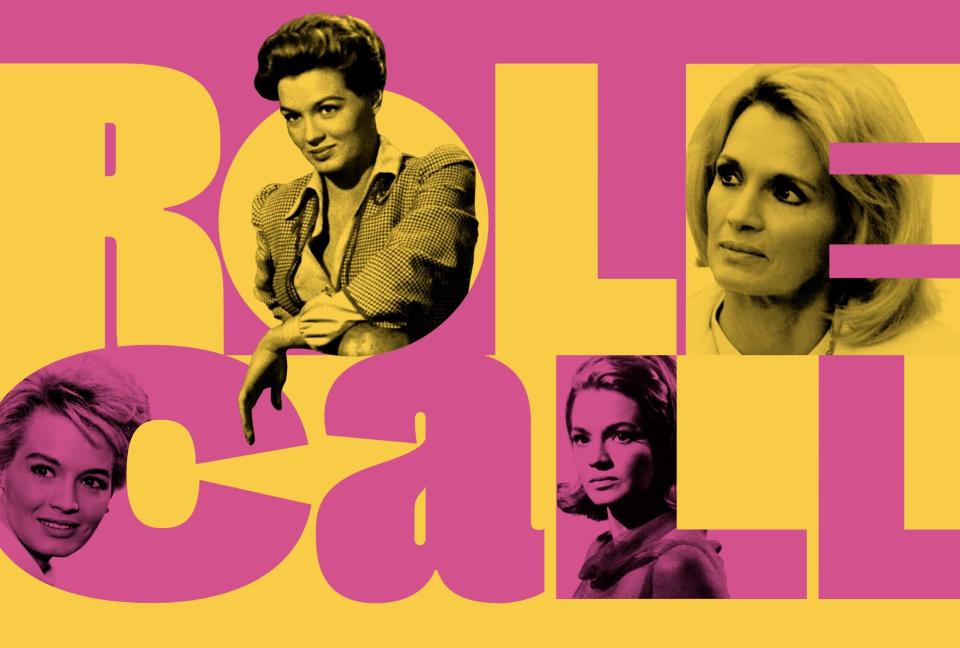
Everett Collection
Turner Classic Movies will celebrate Dickinson's remarkable career at this year's annual TCM Classic Film Festival, beginning with Thursday night's opening gala presentation of Rio Bravo, where she will appear in conversation with TCM host Ben Mankiewicz.
Ahead of her big night, we caught up with Dickinson to take a walk down memory lane and discuss some of her biggest projects, from Rio Bravo and The Killers to Ocean's 11 and Dressed to Kill.
<em>Gun the Man Down</em> (1956)
Dickinson began working steadily in both television and film in 1954, but her first leading role came as girlfriend Janice in this Western. James Arness, in the role led to his TV career on Gunsmoke, plays Remington "Rem" Anderson, an outlaw who seeks out revenge on his two partners and kidnapped girlfriend after they double cross him. The Western genre would dominate Dickinson's early career on both the big and small screen. Yet, despite all her time in Westerns, she wasn't particularly at ease on a horse. "We were all on horseback, and they knew I was not a horsewoman," she recalls of her costars. "They tried to scare me and did some tricks on their horses. I nearly fell off once. It was terrible."
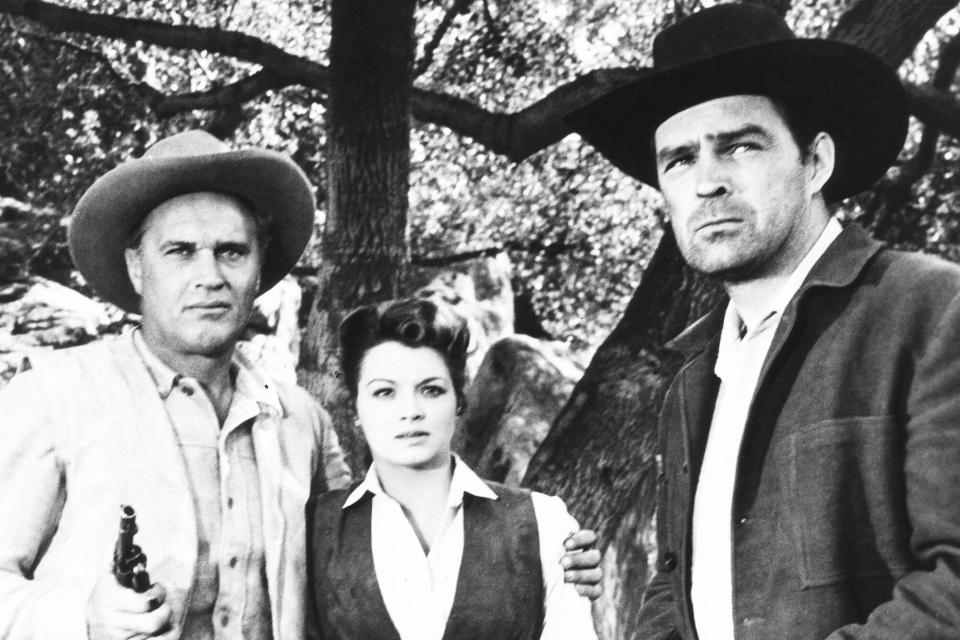
<em> Rio Bravo </em> (1959)
Directed by Howard Hawks, this classic Western stars John Wayne as Sheriff John T. Chance, a small-town sheriff who recruits Stumpy (Walter Brennan), local drunk Dude (Dean Martin), and young gunslinger Colorado Ryan (Ricky Nelson) in his efforts to keep a man in jail. Dickinson features as "Feathers," a feisty widow who develops a bond with Chance, in what became her breakout role. She remembers Wayne as an ideal scene partner. "It was heaven," she recalls. "He was so respectful of my freshness. He was an enormous star and this was as big as it gets in production, and it was a great honor to have been chosen. He was very helpful by being patient with me. Once, we sat and talked for about 10 minutes about a scene. That's unheard of. You don't waste a second. But he was trying to relax me. I got in a few binds because you can tell when a scene's not working. He leaned on his rifle and waited, and then, I finally got the scene right."
Dickinson also adored her costumes (minus one notable hat) in the film, given their lush contrast to her usual Western garb on television. "I liked them because they were not the normal Western duds," she says. "I did a lot of westerns for TV and B-movies, and they were not fun. They either had hoops or something else. This was the first Western where I was able to relax because the clothes were not traditional. Though, I hated the hat that I'm introduced in. It looked bad on me or I looked bad in it. I hated it, but I didn't win. They put it on. But once I was able to take that goddamn hat off, I relaxed a lot."
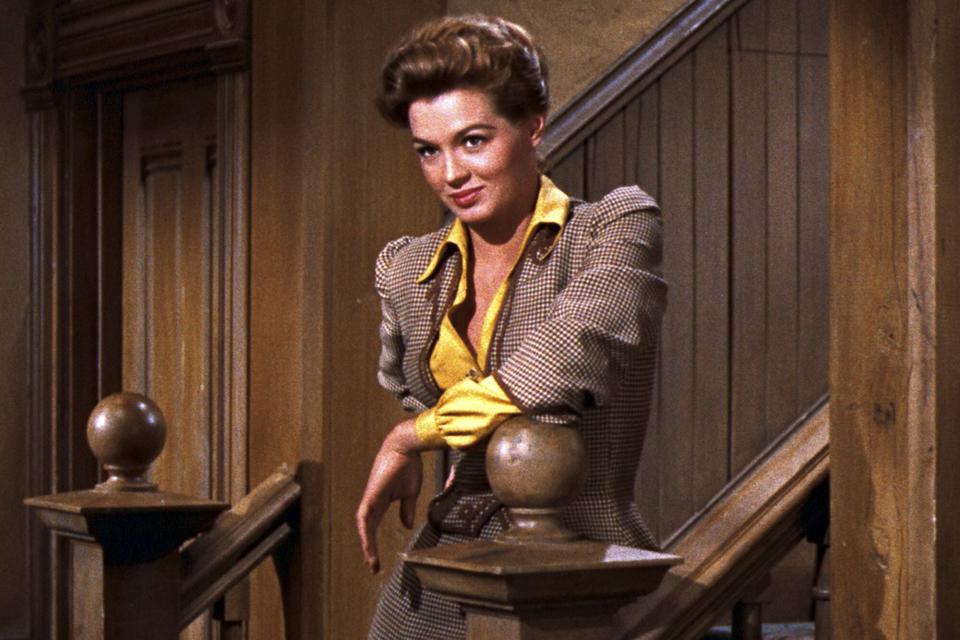
<em> Ocean's 11 </em> (1960)
Ocean's 11 is pure Rat Pack cool, and in that, a feature for the guys. But Dickinson had the chance to shine as one of the few women in the film — playing Beatrice Ocean, wife to Frank Sinatra's Danny. Off screen, the two were lifelong friends, which she credits to a mutual corny sense of humor. "We just liked each other," she says. "I was crazy about him. He was fabulous. He was absolutely the love of my life. Though I would not have wanted to be married to him. He went to bed at 6 a.m." Though Dickinson's role is minor, she has the distinction of being the only woman on the original poster. "I was thrilled to say the least," she says. "I was always bitching about something, like 'I don't have much to do. I've got such a small part.'" Dickinson traveled to Las Vegas for a publicity shoot with the guys, which she remembers as being challenging because of Sinatra's penchant for goofing off. "They were always monkeying around," she adds. "He was the boss, so he could get away with it. He loved to pull tricks. They were kids at play."

<em> The Sins of Rachel Cade </em> (1961)
Though The Sins of Rachel Cade was far from a hit, Dickinson loved making it. She stars as the title character, a medical missionary who travels to the Belgian Congo and ends up in a love triangle with a military administrator (Peter Finch) and a doctor (Roger Moore) before getting pregnant outside of marriage. "I did most of my stuff with Peter Finch, and he was one of our greatest actors ever," she says. "That was a thrill beyond words. We had about a five-page scene, which is a very long scene. It was where I'm outside my cabin, and he passes by and he stops to say hello. We tried to do the scene and we could not make it work. So, he and I decided, let's just do nothing. So, instead he walks by and says 'Good night,' and I say, 'Good night.' And that was the scene. The rest were just fancy frills. We did more with four words than we could with a five-page scene."
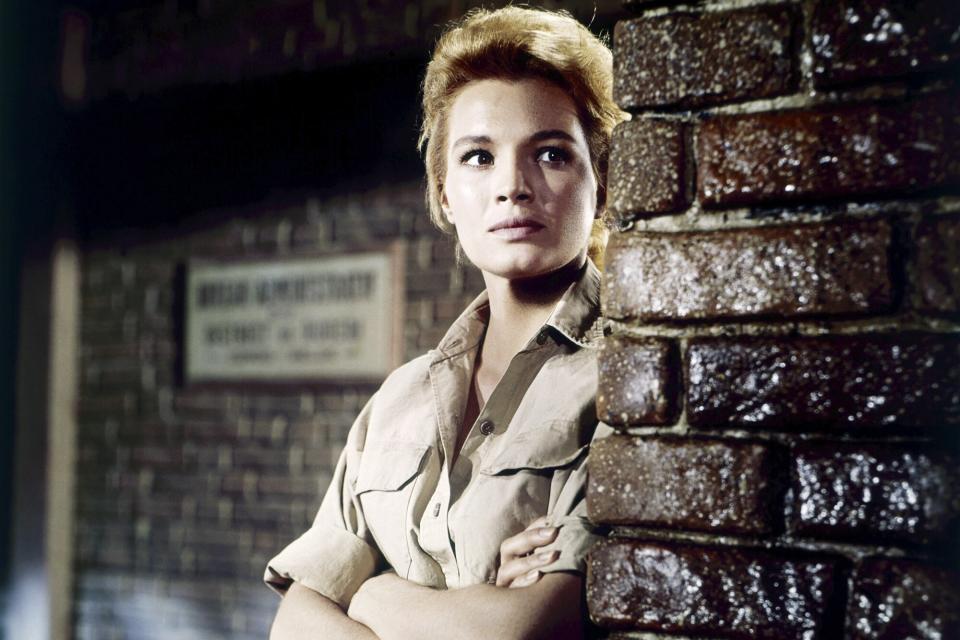
<em> The Killers </em> (1964)
This iconic neo-noir from director Don Siegel stars Dickinson as conniving femme fatale Sheila Farr, opposite the likes of Lee Marvin, John Cassavetes, and Ronald Reagan in his final film before a long career in politics. It was a difficult shoot, not because of the dark subject matter but because they made it in the aftermath of the assassination of President John F. Kennedy, whom counted Dickinson as a confidante (rumors have swirled for years of an affair, but she previously told EW, "Some things are just no one's business"). "The president was shot the day before we went to work," she remembers. "It was horrible to have to try to act and get through the day. We got a couple days off for his memorial, but then we still had to go back to Palm Springs and go to work, so it was pretty rough."
Little did she know that she was sharing screen time with another future president. Reagan plays against type as gangster Jack Browning, slapping Dickinson's Sheila in a climactic moment, which never sat well with him. "He said, 'I'm sorry I had to slap you,'" she recalls. "Which, of course, he didn't. It just looks like he did. One time I ran into him later at a dinner party and he said, 'I'm still sorry I had to slap you.' He couldn't cut the mustard as a villain. He was too gentle." Dickinson also remembers that Reagan wasn't very engaged in the filmmaking process, seeing it merely as an obligation to complete the terms of his studio contract before pivoting from acting to politics. "He couldn't have cared less about the film," she says. "But he had stacks of paper, I mean like more than a foot tall. He was studying and working on becoming governor, and every break he got, he was off working and studying and planning. We didn't quite take it seriously."
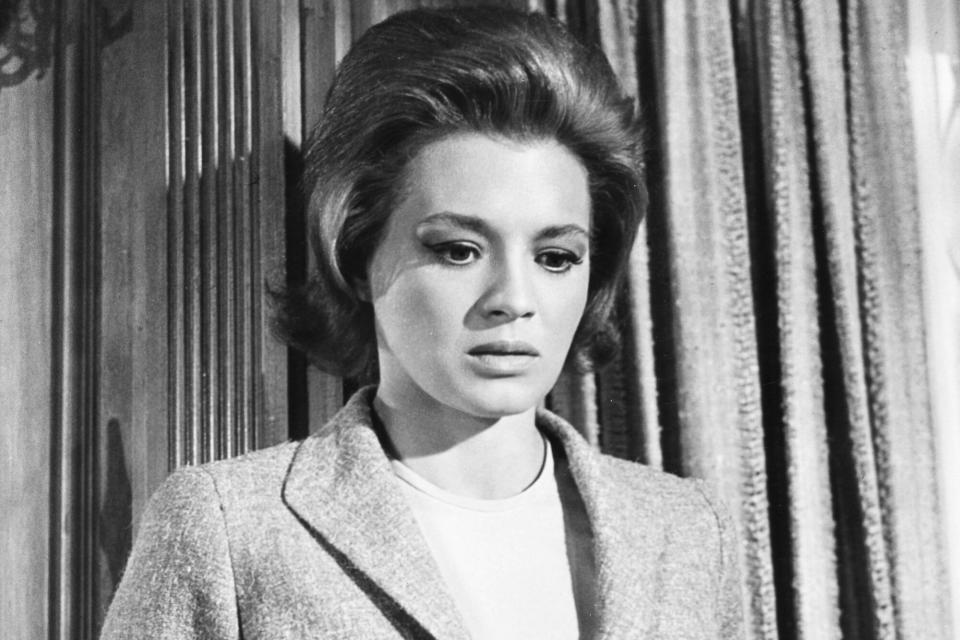
<em> The Art of Love </em> (1965)
Despite being directed by Norman Jewison and romanced on screen by James Garner, Dickinson remembers The Art of Love as a picture no one wanted to be making. Dick Van Dyke stars as struggling artist Paul Sloane, who fakes his own death to raise the value of his paintings. His pal, Casey (Garner), sells the paintings, keeping most of the profit and even wooing Paul's fiancée, Laurie (Dickinson). This film marked the last of Jewison's contract obligations with Universal, and he was eager to move on to less frivolous subject matter. Garner, generally known to be a charming costar, didn't gel with Dickinson. "I don't think I was appealing to him at all," she reflects. "It's not the fault of anybody. There wasn't much chemistry between us, and it was a stupid movie."
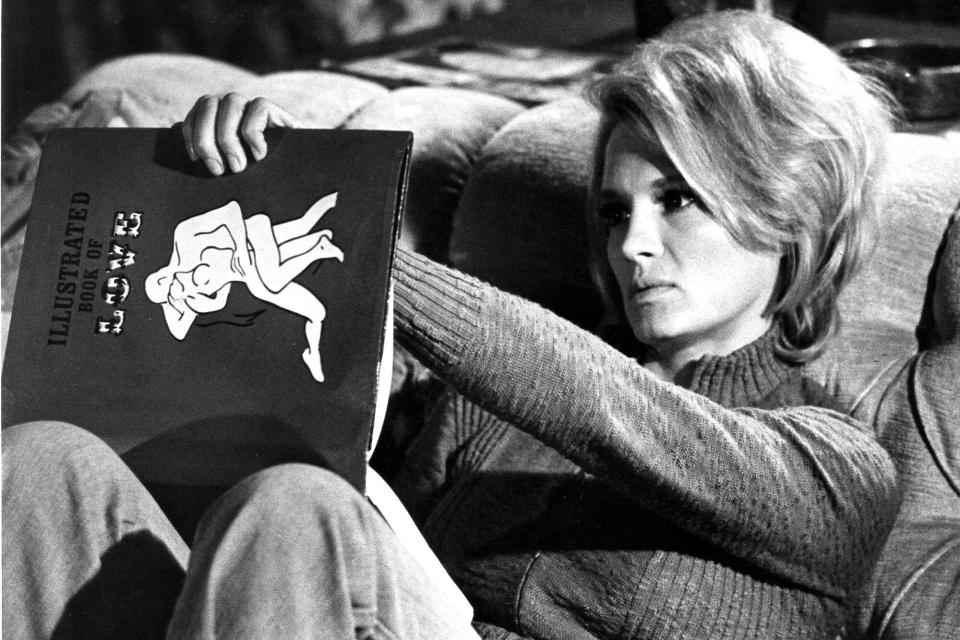
<em> The Chase </em> (1966)
This bleak crime drama boasts a stellar cast, including Robert Redford, Jane Fonda, and Marlon Brando. Dickinson has a small role as Ruby, the wife of Brando's Sheriff Calder, but she jumped at the chance to act opposite the legend. "I was excited as hell," she says. "I was in London when I got the part, and I asked a question of my agent and whatever the question was, he says, 'It's Brando's wife.' I think I said, 'Is this a good script?' And he said, 'Shut up and get back here.' Then I went to wardrobe, and Jane Fonda was in wardrobe picking out stuff for her part. And I said, 'Well, it's not a very good part.' And she said, 'You know, Ruby's a hell of a name.' And that took care of it all."
Still, Brando was notoriously mercurial, and Dickinson remembers one excruciating moment on set where she blew a take. "We were in the restaurant and he's got on a tuxedo shirt with ruffles," she recounts. "He ad-libbed something. It was fluffy and feminine and he made some joke, and I laughed and I ruined the take. Talk about feeling stupid. But it was my natural reaction. But that doesn't count in movies. 'We don't have natural reactions. We have appropriate reactions.'"
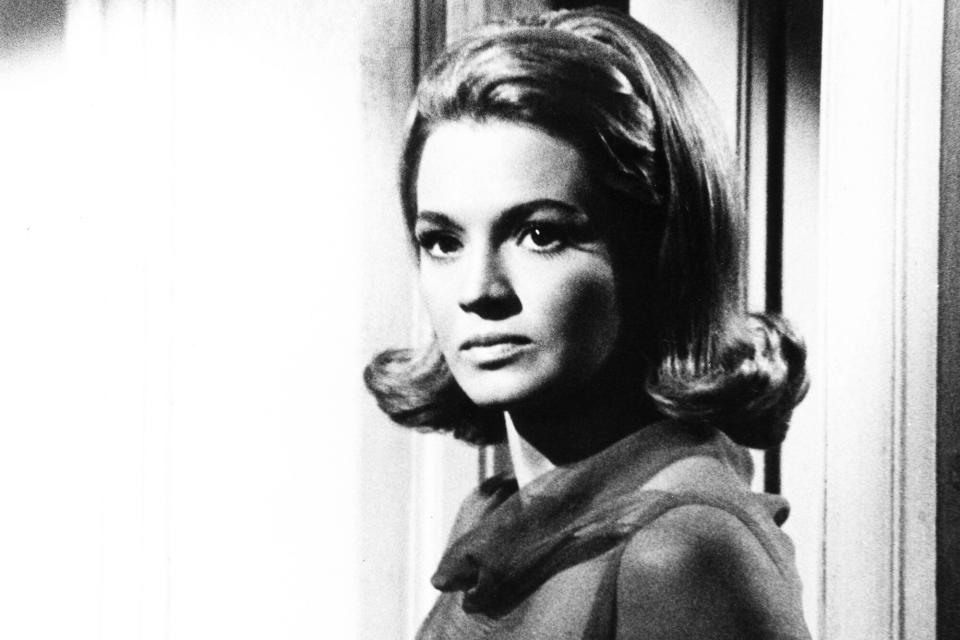
<em> Point Blank </em> (1967)
Dickinson re-teamed with Lee Marvin in this crime drama as another mixed-up dame, Chris. She loved working with Marvin in spite of his gruff exterior. "He was wounded in the war. And he carried that wound with him," she explains. "He was not a friendly person. He was what you think he was. He didn't have to act. He was a tough bastard. And a great guy. But really no frills. He was fairly warm, but you couldn't see it. You had to look for it." In a scene where her character attacks Marvin's Walker, she beats him with a pool cue — and she accidentally hit Marvin for real. "I nicked him, I got him on the cheek," she remembers. "And you can't cover up blood, so, you can tell I got him."

<em> Police Woman </em> (1974-78)
Dickinson starred on this NBC police procedural for four seasons, breaking new ground as the first woman to star in an hour-long drama as a police officer. She played Sgt. Pepper Anderson, an undercover cop for the LAPD's criminal conspiracy unit. At first, Dickinson was proud to blaze a trail for women on television. "It was part of the reason I took it," she says. "But we can all look back on everything we did and think I'm sorry I did that. Or I wish I had done that over there. I am sorry I took the series, but I was proud of that." Dickinson points to the skimpy undercover costumes she often wore (she recalls a particularly ignominious white ensemble when Pepper danced as a stripper) as one reason for her remorse, but more pointedly, it was the fact that the show brought a grinding halt to her film work. "It hurt my movie career," she explains. "You can be a star on TV and they don't give a s---. It's the movies that counted, at least then."
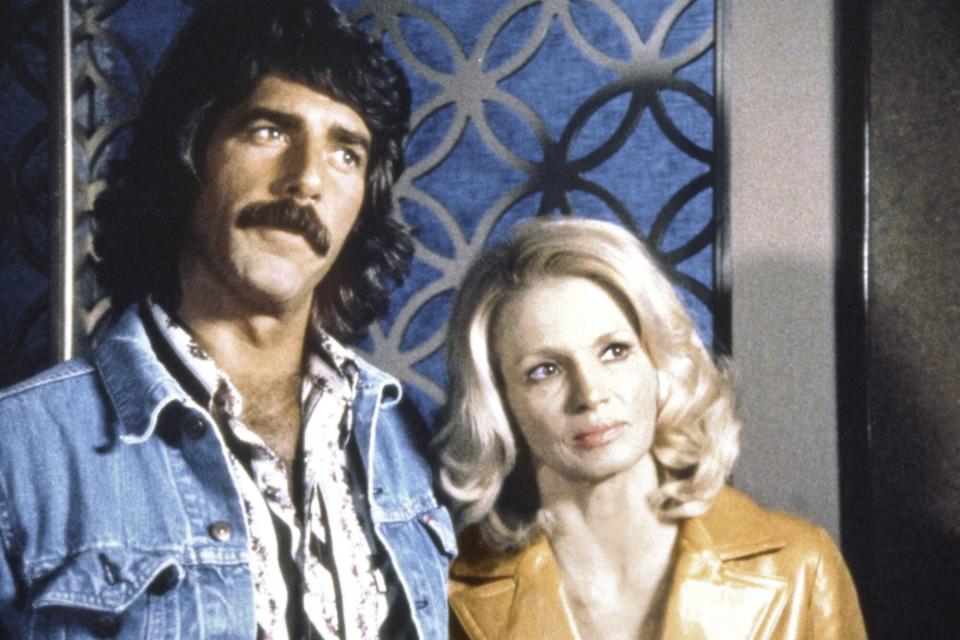
<em> Dressed to Kill </em> (1980)
Dickinson made a hell of a splash returning to film in this controversial Brian De Palma classic. She stars as Kate Miller, a sexually frustrated housewife who is brutally murdered in a New York City elevator following a chance sexual encounter. The film, including Kate's murder, is widely considered De Palma's homage to Alfred Hitchcock's Psycho. Dickinson cites De Palma as one of the more intimidating directors she's worked with. "It was scary because he's a man of few words," she says. "That's always difficult." Dickinson remembers a conflict between her and costume designer Ann Roth. Roth wanted Kate Miller to wear a gray suit in reference to Kim Novak in Vertigo, but Dickinson wanted to wear white. "I said, 'If I have a white coat, they're not going to expect blood to go on a white coat,' which was exactly right," she recalls.
She won the argument, but that did prove complicated while shooting the explicit murder scene. "You have to match what you did in the master," she explains. "So you do a master shot, you do the whole scene, and then you break it down and do that close up and closer up and closer up. You do it many times now from different angles. And so, I was afraid to get blood on my white coat [for continuity]. But Brian said, 'I don't care about the white coat! Do it well!'"

<em> Sabrina </em> (1995)
Dickinson has been retired from acting since 2009, but her output slowed considerably in the 1990s. One of her last major projects was this 1995 remake of classic Billy Wilder romance Sabrina, starring Harrison Ford in the Humphrey Bogart role and Greg Kinnear in the William Holden part. Dickinson has a supporting part as the mother of the woman Kinnear's David is engaged to marry. But because so many thought the classic shouldn't be touched, she says it made for a less than stellar time. "It was not a pleasant set," she says. "I don't know why. The whole idea of remaking it was not very good. It didn't feel quite right. It just didn't work. And Harrison Ford was lovely, but he's not fun. He's a businessman, doing his job."

Sign up for Entertainment Weekly's free daily newsletter to get breaking TV news, exclusive first looks, recaps, reviews, interviews with your favorite stars, and more.
Related content:
